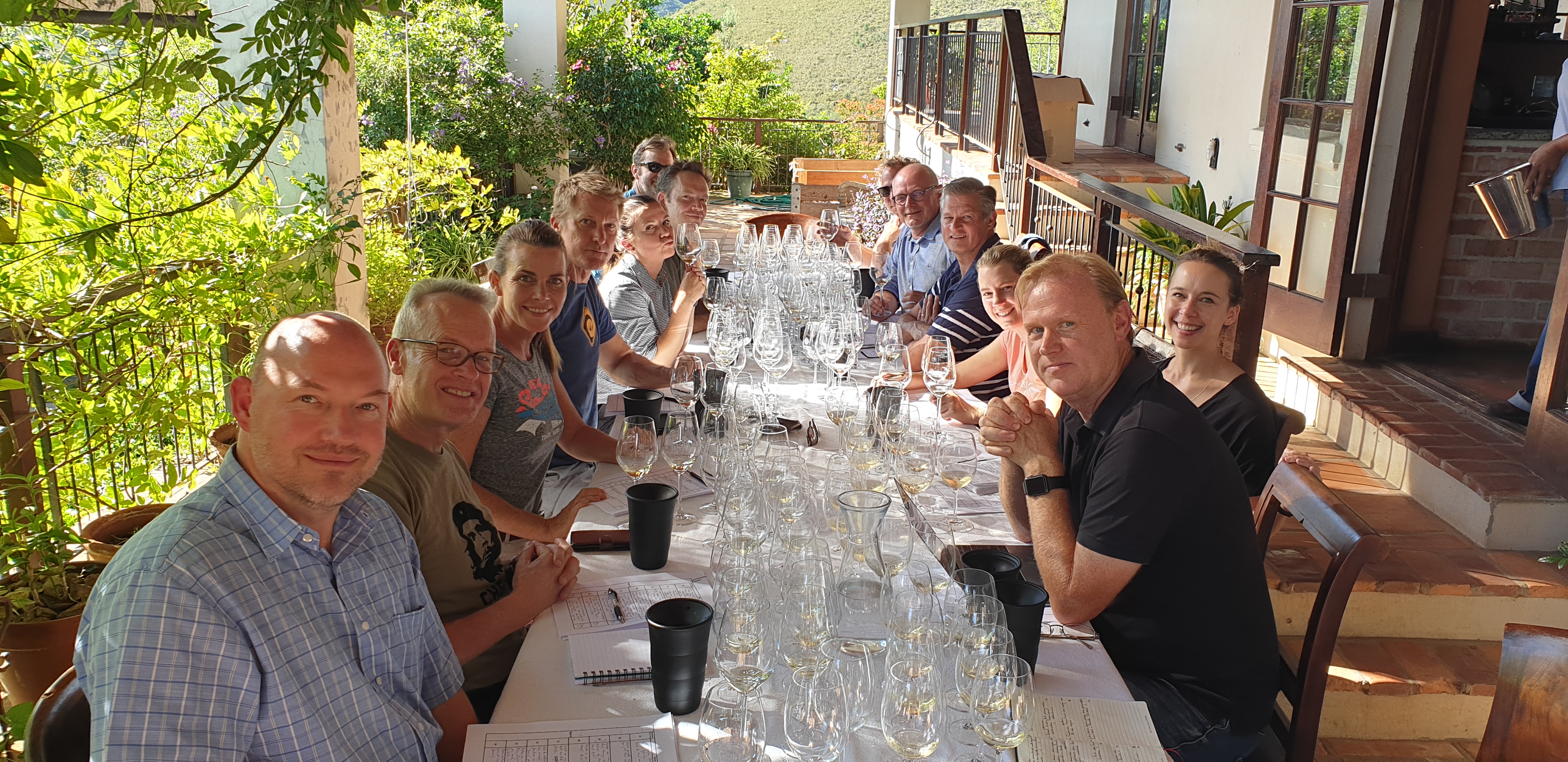
This was the fifth Lismore tasting, designed to pit the best wines of South Africa blind against their peers from the rest of the world. In all, we tasted 35 wines, 13 of which were from outside the Cape. Other countries and regions represented were Argentina (3), Australia (1), Burgundy (3), Chile (3), England (1), New Zealand (1) and the United States (1).
The judges, all of them winemakers apart from me and Christian Eedes of winemag.co.za, were Nadia Barnard (Waterkloof); Andries Berger (Paul Cluver); Alex Dale (Radford Dale); Lizelle Gerber (Boschendal); Kevin Grant (Ataraxia); Richard Kershaw (Kershaw); Jean-Claude Martin (Creation); Andrea and Chris Mullineux (Mullineux and Leeu Passant); Samantha O’Keefe (Lismore); Gordon and Nadia Newton Johnson (Newton Johnson) and Craig Wessels (Restless River).
We last tasted Chardonnay in 2016 and it was noteworthy how much the category had improved in the intervening period. It is also getting harder to tell top Chardonnays from around the world apart and recognise what Kevin Grant called “wines with DNA”. No one said that they would be prepared to bet their house on identifying the precise origin of any of the 34 wines in the line-up. Top Chardonnay producers have learnt from one another, particularly when it comes to crafting fresher, more focused, less oak dominated styles.
The results were controversial, at least as far as the averaged group scores were concerned. Chile took our top spot, ahead of a wine from England (yes, England) and Burgundy. The rest of the top ten was made up of five South African wines, one more from Burgundy and an Australian. The Cape Chardonnays were from Stellenbosch (4) and Elgin (1) with no representatives from the Hemel-en-Aarde Valley.
My own top 16 – I gave a number of wines the same score – was very different (see below), although some wines featured in both lists. Nine of my top wines were from South Africa, with a more even spread of regions: Constantia (1), Elgin (3), Hemel-en-Aarde Ridge (1), Stellenbosch (3), Walker Bay (1). My other six were from Argentina (1), Chile (2), England (1), France (2) and New Zealand (1). Three of my top four wines were from South Africa, with the fourth from the brilliant Black Book in England.
And my conclusion? South Africa continues to deserve a seat at Chardonnay’s top table, but the room is becoming more crowded. Consumers should rejoice at the grape’s continued evolution and improvement, not only in the Cape, but world-wide.
GROUP TASTING
- 2017 Errázuriz Las Pizarras, Aconcagua Costa (Chile)
- 2017 Black Book Clayhill Vineyard, Essex (England)
- 2014 Domaine Marc Morey Puligny-Montrachet Premier Cru Les Referts (Burgundy)
- 2017 Radford Dale Chardonnay, Stellenbosch (South Africa)
- 2017 Kershaw Clonal Selection, Elgin (South Africa)
- 2017 Circumstance, Stellenbosch (South Africa)
- 2016 Leeu Passant, Stellenbosch (South Africa)
- 2015 Domaine Hubert Lamy St Aubin Premier Cru Les Frionnes (France)
- 2017 Meerlust, Stellenbosch (South Africa)
- 2015 Leeuwin Art Series, Margaret River (Australia)
TIM’S TOP SIXTEEN
- 2016 Boschendal, Elgin (South Africa)
- 2017 Black Book Clayhill Vineyard, Essex (England); 2016 Crystallum Clay Shales, Hemel-en-Aarde Ridge (South Africa); 2017 Groot Constantia, Constantia (South Africa)
- 2014 Domaine Marc Morey Puligny-Montrachet Premier Cru Les Referts (France); 2017 Kershaw Clonal Selection, Elgin (South Africa); 2015 Kumeu River Mate’s Vineyard, Kumeu (New Zealand)
- 2015 Leeu Passant, Stellenbosch (South Africa); 2017 Zuccardi Fósil, San Pablo (Argentina)
- 2016 Altos Las Gredas, Valle del Cautín (Chile); 2017 Creation Reserve, Walker Bay (South Africa); 2017 Delaire Graff Terraced Block, Stellenbosch (South Africa); 2016 Leeu Passant, Stellenbosch (South Africa); 2017 Oak Valley Groenlandberg, Elgin (South Africa); 2016 Samuel Billaud Chablis Premier Cru Séchet (France); 2015 Sol de Sol, Malleco Valley (Chile)